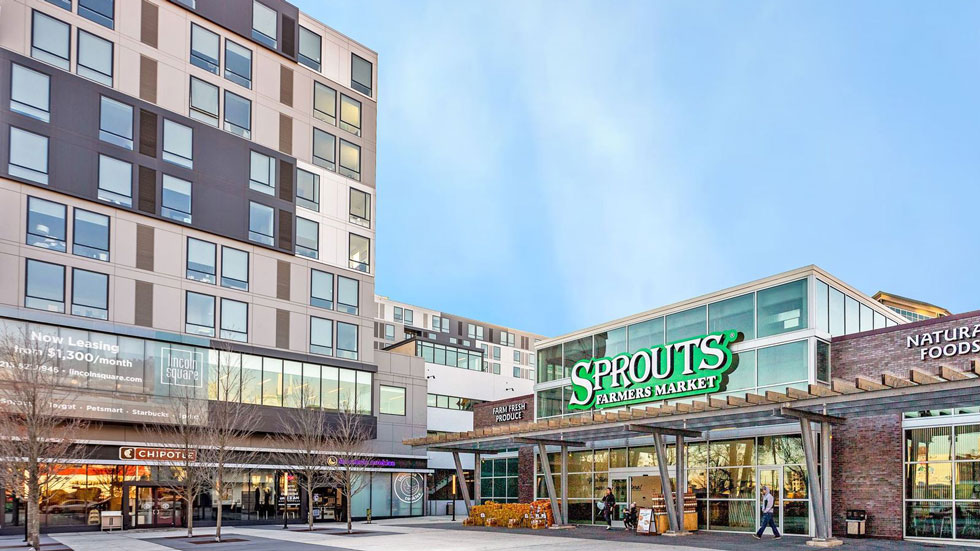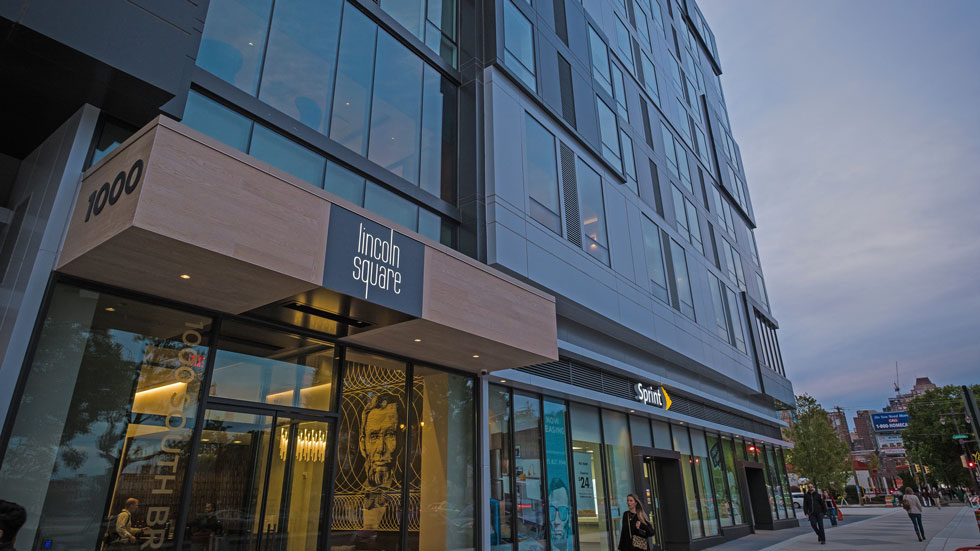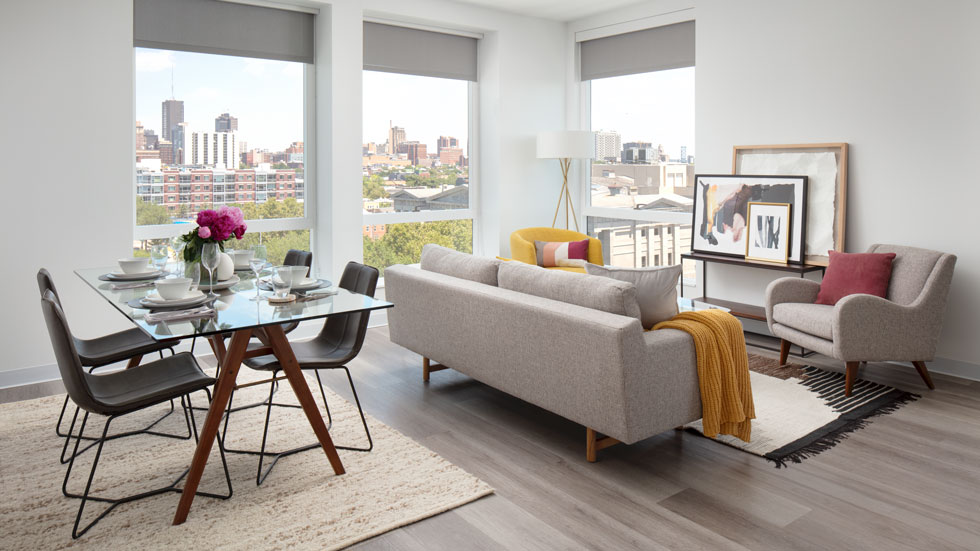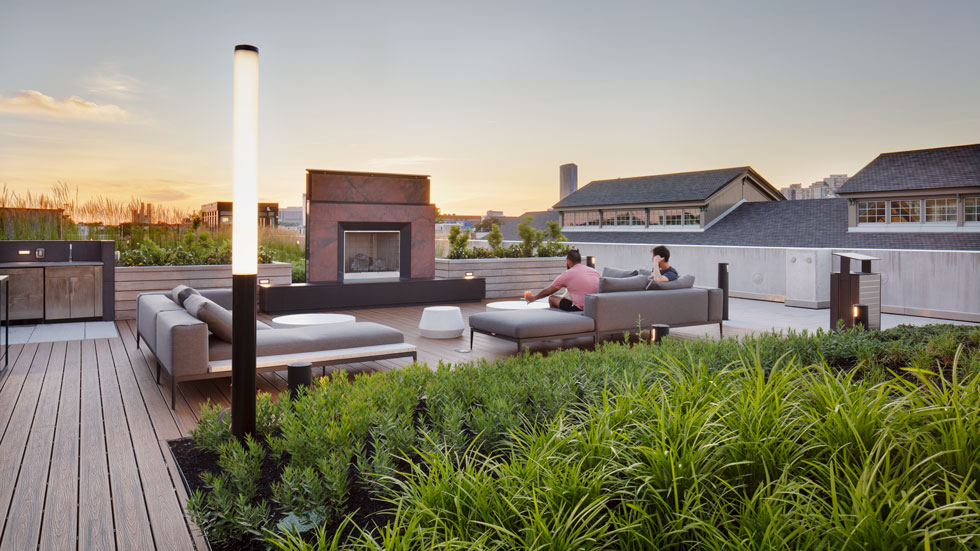Kimco Realty’s Lincoln Square has turned an underutilized lot into a community focal point.
Since its opening in 2018, Kimco Realty Corp.’s (NYSE: KIM) Lincoln Square in Philadelphia has become a neighborhood linchpin that has revitalized an underutilized property, incorporated the adaptive reuse of a historic site, and led to the economic revival of the surrounding community.
Located at 1000 South Broad Street, the 3.6-acre mixed-use development occupies a full city block and connects the Center City and South Philadelphia neighborhoods through its mix of multifamily units and retail staples like Target and PetSmart.
The project also involved salvaging a historic train shed and transforming it into a Sprouts Farmers Market, an Arizona-based grocery chain specializing in natural and organic foods.
The creative, adaptive reuse of the site is something that Kimco says was sorely needed in the area. The success of the project has even catalyzed other new developments in its vicinity.
“By putting 100,000 square feet of brand new, state-of-the-art retail in addition to 322 new multifamily units in a dense urban market, Lincoln Square has provided a model for this kind of project in this neighborhood that had been lacking,” says Wilbur Simmons, president of Kimco’s southern region.
Kimco CEO Conor Flynn adds that even through the COVID-19 pandemic, Lincoln Square continues to be a signature property in the company’s growing mixed-use portfolio. “This center is a prime example of how essential retail has prevailed, and how a multifamily component can enhance an asset and drive additional traffic to the retail.”
Through transforming what was once an underutilized lot in a prime location, Flynn says, “we’ve made Lincoln Square a community focal point, providing an unmatched urban living experience and much-needed retail and grocery options in a community that was once underserved and underdeveloped.”
Philadelphia City Councilmember Kenyatta Johnson, representing the Second Council District, notes that given the near four-acre size of the square block, and the corner’s importance as the gateway and crossroads between the neighborhoods of Center City, Southwest Center City, South Philadelphia, Point Breeze, Graduate Hospital, and Hawthorne, “any development of this property had to be carefully crafted.”
Johnson adds that Lincoln Square has “enhanced the quality of life in the area by replacing a parking lot and blighted historical building with a well-designed, thriving mixed-use property.”
Advocating Adaptive Reuse
Kimco’s partner in the venture, Philadelphia-based Alterra Property Group, LLC, had worked with the city on acquiring the property and approached Kimco with plans for utilizing multiple developers to create Lincoln Square. Kimco saw the potential to play a larger role in the project.
“Ultimately, the beauty of [Kimco’s] operating platform is that we do multifamily on a select basis ourselves, along with the retail that’s right in our wheelhouse,” Simmons explains. “We wanted to do a more simplistic transaction with one party, instead of a complicated one with multiple developers. A complex negotiation that was taking four or five months, all of a sudden took four or five days and we had entered a straightforward joint venture,” he says.
The city block now known as Lincoln Square holds two-fold historical significance in Philadelphia’s timeline. Built in 1876 for the Philadelphia, Wilmington, and Baltimore Railroad Company, the train shed and adjoining head house at the site were situated next to a renowned passenger station constructed in 1852. That train station served as a stop for President Lincoln’s funeral train following his assassination in 1865, and the accompanying shed held a public viewing as well.
The train shed itself is architecturally significant and was added to the National Register of Historic Places in 2011 because of a roof supported by a 100-ft Fink truss system, one of the few remaining examples in the U.S.
Incorporating the historic shed into the overall design posed a unique challenge, but one that was embraced by Sprouts. “While it was daunting as a grocery store to design and put together, it’s turned out to be a really exciting place for people to shop,” says Terry Gibbons, vice president of real estate at Sprouts.
Sprouts joined the project to help bridge the neighborhood gap in grocery offerings. “When we evaluated the Philadelphia market, we discovered the intersection where Lincoln Square is located was ground zero in the community and had a lot of potential,” Gibbons says.
“From the very start, all the way through the project, we could not have asked for a better partner in Kimco Realty,” he adds. They were there, every step of the way during development and they’ve been there for us since opening.”
Kimco credits the Sprouts team for its willingness to think outside of the box in organizing their new store.
“It took a lot of creativity on the part of Sprouts to really orient the build and get comfortable with a very deep and somewhat narrow building versus a typical grocery store layout, which is usually wider than they are deep. But it’s worked out wonderfully and it’s a very successful Sprouts,” Simmons says.
Live-Work-Play
With plans for repurposing the historic component as a grocery anchor underway, Kimco then focused on the residential and retail components that would give the square its live-work-play vibe.
“We sought to utilize our frontage on Broad Street and Washington Avenue to facilitate the retail access on street level,” Simmons explains. Kimco quickly leased 100% of its retail with a mix including Target, PetSmart, Starbucks, Chipotle, and Insomnia Cookies.
“The existing residents were very helpful to us, and we worked with them extensively on the product type and the mix of retail that would appeal to them, so they’ve been very supportive of the project as a result,” Simmons adds.
Designed by Philadelphia-based BLT Architects, Lincoln Square’s 322-unit residential component bridges the gap between South Philly and Center City neighborhoods where apartments remain in high demand. Residential units offer cityscape views and range from studio to three-bedroom layouts. Select units also have a terrace or balcony, providing residents with their own private outdoor space.
The design incorporates a large parking deck in the center of the site and the highest level of it has been utilized to build a 50,000-square-foot outdoor amenity space, which is by far the largest outdoor amenity space for multifamily housing in the city, according to Kimco. The multilevel parking garage offers 415 public and private parking spots with easy access to the retail and residential elements.
“The rooftop space is a game changer in terms of the amenity base that we were able to offer inside Lincoln Square’s multifamily product,” Simmons says. Residents can use state-of-the-art indoor and outdoor features including a fitness club, outdoor running track, bike storage, dog run, pet grooming station, golf simulator, and a green roof with outdoor kitchens, group gathering spaces, lawns and fire pits. Community members can also enjoy the new Lincoln Walk: an outdoor seating and gathering space that will host special events and programming.
With the train shed transformed into a Sprouts and linked with the adjacent residential tower, the block became an anchor for residents and visitors to the community. “Lincoln Square is rich in retail offerings and public space that will invigorate the surrounding area as much as the community of tenants who call it home,” Michael Prifti, principal at BLT Architects, noted in advance of its 2018 launch.
Bridging Neighborhoods
The benefits go beyond serving Lincoln Square’s residents— the project has expanded much-needed retail and grocery offerings to a neighborhood previously considered a “food desert,” along with adding jobs and tax revenue.
“Lincoln Square created hundreds of new jobs for Philadelphians, brought a reputable fresh grocer into the market, and brought other much-needed retail offerings, many of which were specifically requested by the surrounding residents,” says Councilmember Johnson.
Gibbons adds that Lincoln square has replaced an underutilized piece of property and become the most prominent retail development in the southern section of Philadelphia in the last few years. “We’re proud to be bringing fresh food at an affordable price to people who beforehand, didn’t have access to high quality, farm fresh products,” he adds, in reference to Sprouts. “We’ve had an overwhelming reception from the community since we opened our doors.”
Sprouts, which employs roughly 100 workers, along with the Lincoln Square’s other retailers, have been able to weather the challenges brought by the COVID-19 pandemic by continuing to supply essential products and services to the neighborhood. The mix of Lincoln’s Square’s offering makes it “a prototype example of necessity retail,” according to Simmons.
For Kimco, a measure of success for Lincoln Square is that the project has prompted other new developments in the area and proven the economic potential of the neighborhood.
“We welcome these new projects wholeheartedly because they really justify the critical mass that we always believe that could be assembled at Broad and Washington streets—it’s become an epicenter,” Simmons says.
In a city of neighborhoods like Philadelphia, the right mix of retails and thoughtfully designed multi-family residential has helped bridge the gap between them. “We always believed that the balance of the area was ripe to really pop and continue to be developed and we’re seeing that, even through the pandemic,” he adds.




